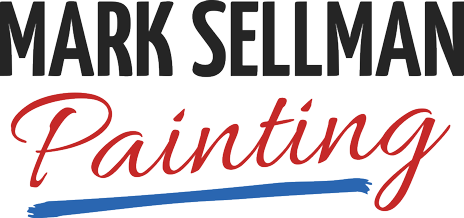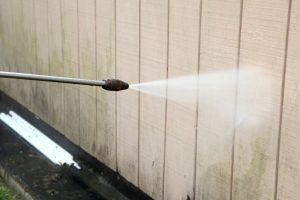In our last blog, we discussed five ways drywall can be damaged. This included plumbing leaks, poor fastenings, cracking, and more. For this blog, we wanted to focus on fixing small drywall damage around the house. Drywall is known for being a little brittle sometimes and small holes can happen. Between doorknobs, toys, chairs, etc. your drywall can take a beating. Here is a step-by-step guide on how to repair a damaged area of drywall.
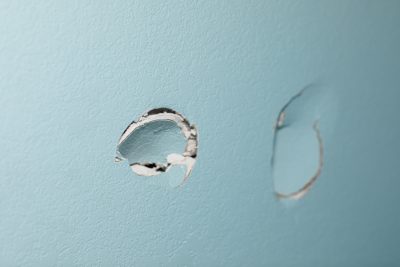
- Prepare the opening by cutting a straight-lined square or rectangle around the damaged area. This will trim the area giving you a clean space to work with.
- Install backing strips, which are thin pieces of plywood or lumber. They should be greater than the longest part of the hole so it’s sturdy. Using drywall screws, secure the strips to the remaining drywall about an inch from the edge.
- Install a drywall patch that fits the hole. It doesn’t need to fit the space perfectly, but it shouldn’t exceed an 1/8th of an inch. Use screws to secure it in place, again about an inch from the edge. which are thin pieces of plywood or lumber. They should be greater than the longest part of the hole so it’s sturdy. Using drywall screws, secure the strips to the remaining drywall about an inch from the edge.
- Tape up the seams with drywall joint tape. It needs to lay flat over the seam without any wrinkles or bulges.
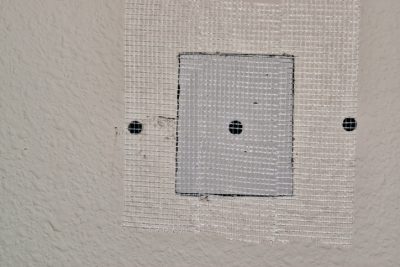
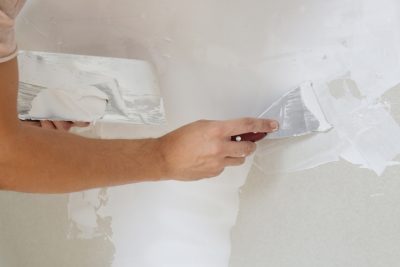
- Mud the seams with a thin layer of drywall joint compound. You’ll be going over the tape as well. Once the first layer has dried, scrape off any clumps of burrs they might have formed. With the second thin layer, extend it out past the first layer. You’ll need to feather out the edges to make sure the blends together. Once it’s dry, repeat scraping off any burrs or clumps and move onto the final layer. which are thin pieces of plywood or lumber. They should be greater than the longest part of the hole so it’s sturdy. Using drywall screws, secure the strips to the remaining drywall about an inch from the edge.
- Sand the mud down with a sanding stone. This will ensure that the patch is smooth from any burr that might be left over. To avoid the inevitable dust, you can use a wet-sanding stone with the same results. Be careful not to have too much, however. You might accidentally reveal the mesh underneath. with drywall joint tape. It needs to lay flat over the seam without any wrinkles or bulges.
- Prime and repaint the patch with the current wall color you have or use a brand new color!
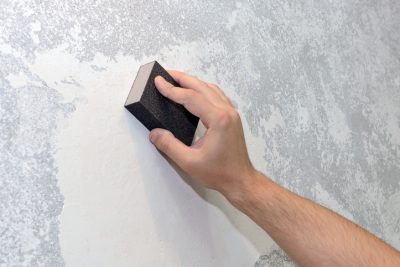
If your drywall wall damage is larger than the door handle or a small crack, contact Mark Sellman Painting today! We’ve got you covered.

